Publications
Export 120 results:
Filters: Keyword is Humans [Clear All Filters]
. The effect of transcutaneous auricular vagus nerve stimulation on cardiovascular function in subarachnoid hemorrhage patients: A randomized trial. Elife. 2025;13.
. A human single-neuron dataset for object recognition. Sci Data. 2025;12(1):79.
. IpsiHand Brain-Computer Interface Therapy Induces Broad Upper Extremity Motor Rehabilitation in Chronic Stroke. Neurorehabil Neural Repair. 2025;39(1):74-86.
. Anatomical registration of intracranial electrodes. Robust model-based localization and deformable smooth brain-shift compensation methods. J Neurosci Methods. 2024;404:110056.
. Complexity organization of resting-state functional-MRI networks. Hum Brain Mapp. 2024;45(12):e26809.
. Does vibrotactile stimulation of the auricular vagus nerve enhance working memory? A behavioral and physiological investigation. Brain Stimul. 2024;17(2):460-468.
. Graded decisions in the human brain. Nat Commun. 2024;15(1):4308.
. Motor imagery ability scores are related to cortical activation during gait imagery. Sci Rep. 2024;14(1):5207.
. Multisensory flicker modulates widespread brain networks and reduces interictal epileptiform discharges. Nat Commun. 2024;15(1):3156.
. Neural mechanisms of face familiarity and learning in the human amygdala and hippocampus. Cell Rep. 2024;43(1):113520.
. Non-invasive Auricular Vagus nerve stimulation for Subarachnoid Hemorrhage (NAVSaH): Protocol for a prospective, triple-blinded, randomized controlled trial. PLoS One. 2024;19(8):e0301154.
. Novel cyclic homogeneous oscillation detection method for high accuracy and specific characterization of neural dynamics. Elife. 2024;12.
. A novel theta-controlled vibrotactile brain-computer interface to treat chronic pain: a pilot study. Sci Rep. 2024;14(1):3433.
. Operant up-conditioning of the soleus cutaneous reflex to non-noxious stimuli in a person with chronic incomplete spinal cord injury. Clin Neurophysiol. 2024;157:1-3.
. Optimal approaches to analyzing functional MRI data in glioma patients. J Neurosci Methods. 2024;402:110011.
. Predicting post-surgical functional status in high-grade glioma with resting state fMRI and machine learning. J Neurooncol. 2024;169(1):175-185.
. Comparisons of electrophysiological markers of impaired executive attention after traumatic brain injury and in healthy aging. Neuroimage. 2023;274:120126.
. Effects of active and sham tDCS on the soleus H-reflex during standing. Exp Brain Res. 2023;241(6):1611-1622.
. The human motor cortex contributes to gravity compensation to maintain posture and during reaching. J Neurophysiol. 2023;129(1):83-101.
. Methods for automated delineation and assessment of EMG responses evoked by peripheral nerve stimulation in diagnostic and closed-loop therapeutic applications. J Neural Eng. 2023;20(4).
. Passive functional mapping of receptive language cortex during general anesthesia using electrocorticography. Clin Neurophysiol. 2023;147:31-44.
. A somato-cognitive action network alternates with effector regions in motor cortex. Nature. 2023;617(7960):351-359.
. Towards clinical application of implantable brain-computer interfaces for people with late-stage ALS: medical and ethical considerations. J Neurol. 2023;270(3):1323-1336.
. The Evoked Potential Operant Conditioning System (EPOCS): A Research Tool and an Emerging Therapy for Chronic Neuromuscular Disorders. J Vis Exp. 2022;(186).
. Heksor: the central nervous system substrate of an adaptive behaviour. J Physiol. 2022;600(15):3423-3452.

